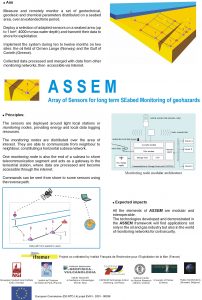CRLAB: A european test site for earthquake precursors and crustal activity: the gulf of Corinth, Greece
Project ID: ENV4960276 (FP4)
Objective
Our objective is to start an integrated earthquake precursor study in the most seismically active region of Europe: the Gulf of Corinth, in Greece. We aim to monitor and cross-correlate the temporal variations of several geophysical parameters related to the tectonic activity, in order to model precursory phenomena and the dynamics of the seismic cycle. To our opinion, an approach with multiparametric, dense arrays is the key for identifying and understanding precursory phenomena to earthquakes. We thus propose the multiparametric monitoring of the Gulf of Corinth.
We aim to record temporary anomalies of some geophysical parameters, and to model the associated mechanical or fluid crustal instability in terms of source location and physical process. We may expect to record precursory phenomena to significant local earthquakes, but also slow, aseismic instabilities. The problem of quantifying the partition between seismic and aseismic strain will be adressed, which is of particular importance for defining the seismic hazard of the area.
In terms of instruments, we will monitor the local seismicity, and at several sites measure strain-related and groundwater-related parameters. We will also monitor the electromagnetic field. Most of the data will be telemetered to central stations.
We will build and test several prototype geophysical instruments. Our contribution will also be methodological. We will attempt to define criteria for site selection, and analyze the time variations of the site transfer functions, which may reflect changes in the local resistivity, permeability, or rigidity of the rocks. Finally, we will develope noise-removal techniques, by studying the cross-correlation between the signal or the site transfer function and the measured environmental factors.
Hence, our project will contribute to define optimal methodologies for earthquake precursor studies, in terms of instruments, site selection, data analysis, and physical modeling.



